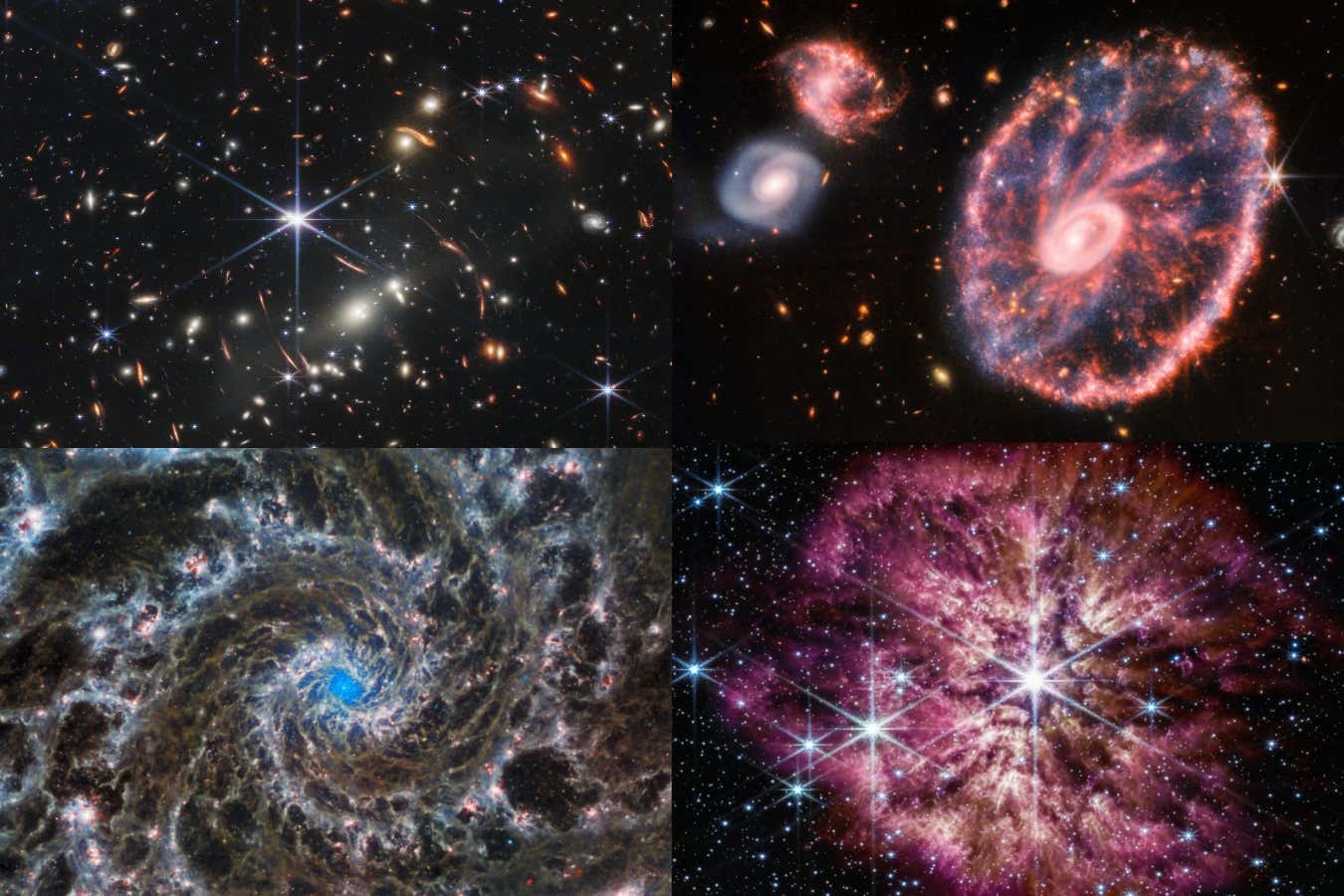The James Webb Telescope revealed its first images of deep space on July 12 2022 – here’s a look back at one year of awe-inspiring images and confounding scientific discoveries
By Leah Crane
12 July 2023
The James Webb Space Telescope has sent back images for the last 12 months
NASA, ESA, CSA, STScI, Webb ERO Production Team
The James Webb Space Telescope (JWST) is rapidly revolutionising astronomy. The powerful observatory released its first batch of images on 12 July 2022, and has been putting out a steady stream of astonishing observations ever since. These are eight of the most stunning and fascinating images from its first year of science – a tiny fraction of what it is expected to accomplish in the years to come.
Deep field
NASA, ESA, CSA, STScI
Among the first set of images released was “Webb’s First Deep Field”, which was at the time the deepest image of the cosmos ever taken. JWST has taken deeper images since this one, but for many astronomers this image was the first herald of a new era of astronomy. Several of the galaxies in this image had never been seen before and seem to be the most distant galaxies ever spotted or examined in detail – discoveries that could upend our understanding of the early universe.
Advertisement
Pillars of Creation
NASA, ESA, CSA, STScI; Joseph DePasquale (STScI), Alyssa Pagan (STScI)
Eagle-eyed readers may recognise these towering spires of dust and gas as the Pillars of Creation, a star-forming region within the Eagle nebula. The area was the subject of one of the most famous astronomical images of all time, taken with the Hubble Space Telescope in 1995, and JWST built on that legacy by showing the billowing clouds in more detail than ever before, shining light on the process of star formation.
Jupiter
NASA, ESA, CSA and Jupiter ERS Team. Image processing by Judy Schmidt
